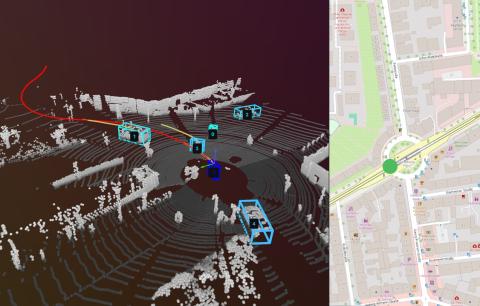Speaker: Simon Pointner
Abstract
This presentation discusses the design and implementation of an end-to-end collision prediction and detection pipeline developed for cyclists. The system aims to anticipate potential collisions between a cyclist and other traffic participants, in particular with motorised vehicles, given the greater risk from their speed and momentum.
The proposed approach encompasses a combination of traditional computer vision and machine learning techniques to address the fundamental sub-tasks: object detection, tracking, and trajectory prediction. The developed pipeline uses Super Fast and Accurate 3D Object Detection for perception, a Kalman filter-based multi-object tracker for temporal consistency, and an adapted goal-conditioned prediction model for forecasting future trajectories. Training and development are supported by the CARLA driving simulator, which provides a synthetic dataset of cyclist-vehicle interactions, complemented by evaluation on the real-world KITTI dataset.
Experiments have shown that this pipeline performs well in robust detection and tracking, which proves its feasibility under limited sensing conditions, such as with LIDAR and GPS/IMU. Trajectory prediction still faces challenges due to high computational loads and the lack of good open-source models. Also, a visualisation framework built using Rerun is available to interactively explore intermediate and final outputs.
Overall, this thesis provides a modular framework for cyclist collision detection and supplies practical insights into the combination of classic and machine learning approaches. The discussion concludes by looking at enhancements to trajectory prediction to enable safer, cyclist-aware traffic systems.
